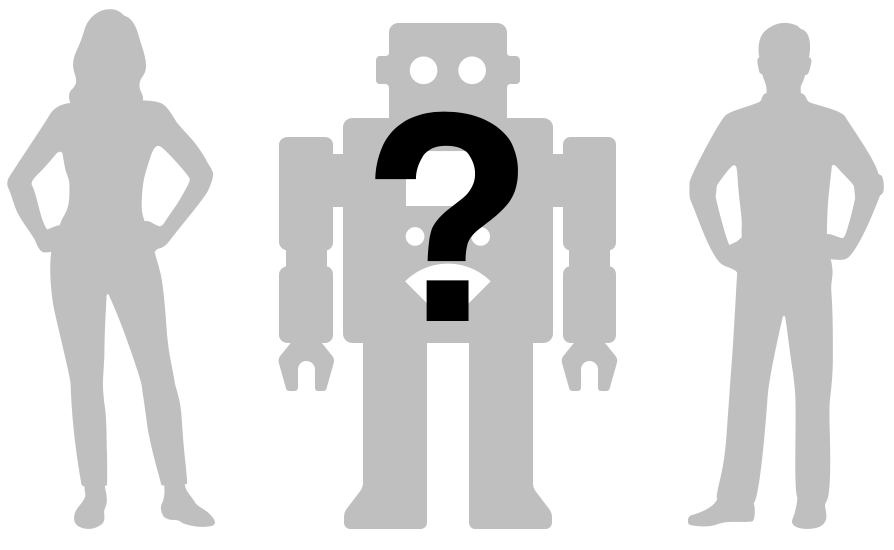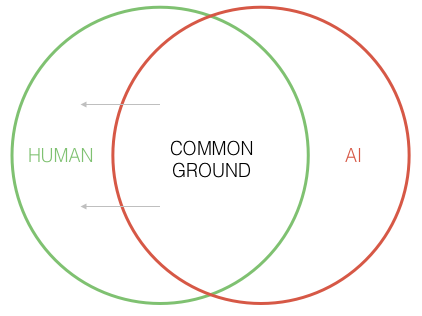
What is AI?
If you stick around for the next 4-5 minutes, AI would no more be that mysterious character who has suddenly barged into our lives–and is trying to both impress and confuse us.
But instead of starting with AI, let’s first look at a thing we already know well: electricity! You’ll realize that you know electricity because (a) even though you can’t touch or see it, roughly you know it is flowing in wires all around us and (b) what it can do for you (run your mixer grinder, fan, computer, etc.). Though most of us don’t care, we generally also have some idea of the third aspect as well: (c) where it is generated and how it flows into our homes from there.
The problem with AI is that neither we can touch nor see it physically nor we have personally used it that much. It’s not yet as integral to our lives as electricity. Most of all, very few people have any idea of how it works. No wonder, most of us can’t figure out what this creature is all about that keeps popping up its head in newspapers, on TV, and in discussions all around.
We will try to systematically unpack it from all three angles–physical, utility, and functionality–and hopefully, you’ll go away with a reasonable understanding of it.
Can I see and touch AI?
AI is already participating in our lives, but we can neither see nor touch it. Why? Essentially, it’s software that is running on the computers of some big companies–nothing more!
But we can experience its presence (just like electricity) as there are many things AI is silently doing from behind our computer screens. For example, tagging friends on Facebook or auto-completing our sentences in Gmail or filtering spam emails, or customizing recommendations on YouTube and Amazon. It’s also working behind the scenes when we use Google Maps or book a taxi using an App or when we talk to virtual attendants like Siri or Alexa. Some hospitals have already started using AI for assisting radiologists and doctors.
Try this: Search and watch something that you normally don’t on YouTube. For example, a speech by Mahatma Gandhi or a performance by Taylor Swift. Watch it a bit and like it. Chances are you’ll soon start seeing related videos in your feed. That’s AI tailoring the playlist according to your preference.
So AI has infiltrated our lives even though it has not yet grabbed us by the collar and introduced itself properly.
What can AI do?
Before we understand what AI can do, let’s make a short list of what we can do. For example, as human beings, we can:
- write an email, poem, article, report, story, play…
- summarize a long document
- differentiate between a spam and a non-spam email
- create paintings
- see a photo and recognize our friends and family members
- scan medical images to diagnose diseases
- create recipes of things we wish to cook
- Analyze data and detect patterns and trends
- create presentations
- create videos
- drive a car safely
- convert text into speech and vice-versa
- create music
- write software programs
- translate one language to another
- brainstorm and come up with ideas
- appear at exams and answer questions and solve problems
A long list! But think about it…
AI can do all of the above and much more, and that too in a fraction of the time compared to us. Isn’t it mindblowing?

As you can see, there is a huge common ground between human and AI capabilities, which is expanding rapidly toward the human side. Can AI do something that even humans can’t do? Sure enough! It can process insane amounts of data in a magically short time–and help in pursuits like the discovery of new drugs, genome research, and optimizing whole city’s traffic in real-time that are beyond human capabilities. Can humans do some things that AI can’t do? Human emotions, empathy, and unbound creativity are still out of reach for AI. And one more thing…we have the ability to learn anything we wish to, but AI is not yet there: It can only do what it was trained to do.
How can something as inert as software operate with human-like intelligence?
How does AI work?
To understand the workings of AI, first think of the journey of a newborn baby who is a complete blank slate and doesn’t know anything, But as time passes, the same baby learns to recognize people, speak, walk, talk, read, write, understand history, science, math, etc., fly airplanes, play, compose music and even create AI.
As human beings, we are gifted with an innate ability to learn. And that’s what is the secret behind AI as well. It’s software with the capability to gobble up vast amounts of data (text, images, figures, videos, etc.) and learn from it. Not just learning once, it can also get smarter over time. Every time you click on YouTube or Amazon or Facebook, their AI systems are learning something about your preferences.
In addition to learning, we humans have the ability to analyze information or situation, reason and make decisions. For example, when we drive a car, we automatically absorb information about our surroundings, think, and make decisions to turn right or left or slow down or speed up. AI has similar faculties.
In short, even though AI is software, it can analyze, learn, reason, and make decisions. How? That’s a subject for another post, but I can assure you it’s not something that we can’t understand.
If you’ve come this far, hopefully, you know AI slightly better than when you started 4-5 minutes back. In essence, it’s a piece of software that mimics human intelligence. Just like electricity, it’s soon going to drive everything we do.
Finally, if you wish to get a taste of AI, here are three places:
- ChatGPT: Enjoy human-like conversations
- DALL.E2: Generate images from your instructions
- Synthesia: AI video creator
Please try them out. All the best!
Wow fufaji .. what a great content. This is a very chatpata gift 🎁. I really like your perspective and understanding about the AI. It’s very interesting and motivational to learn AI.👏🏻👏🏻
Thanks, Mitesh! I feel encouraged.